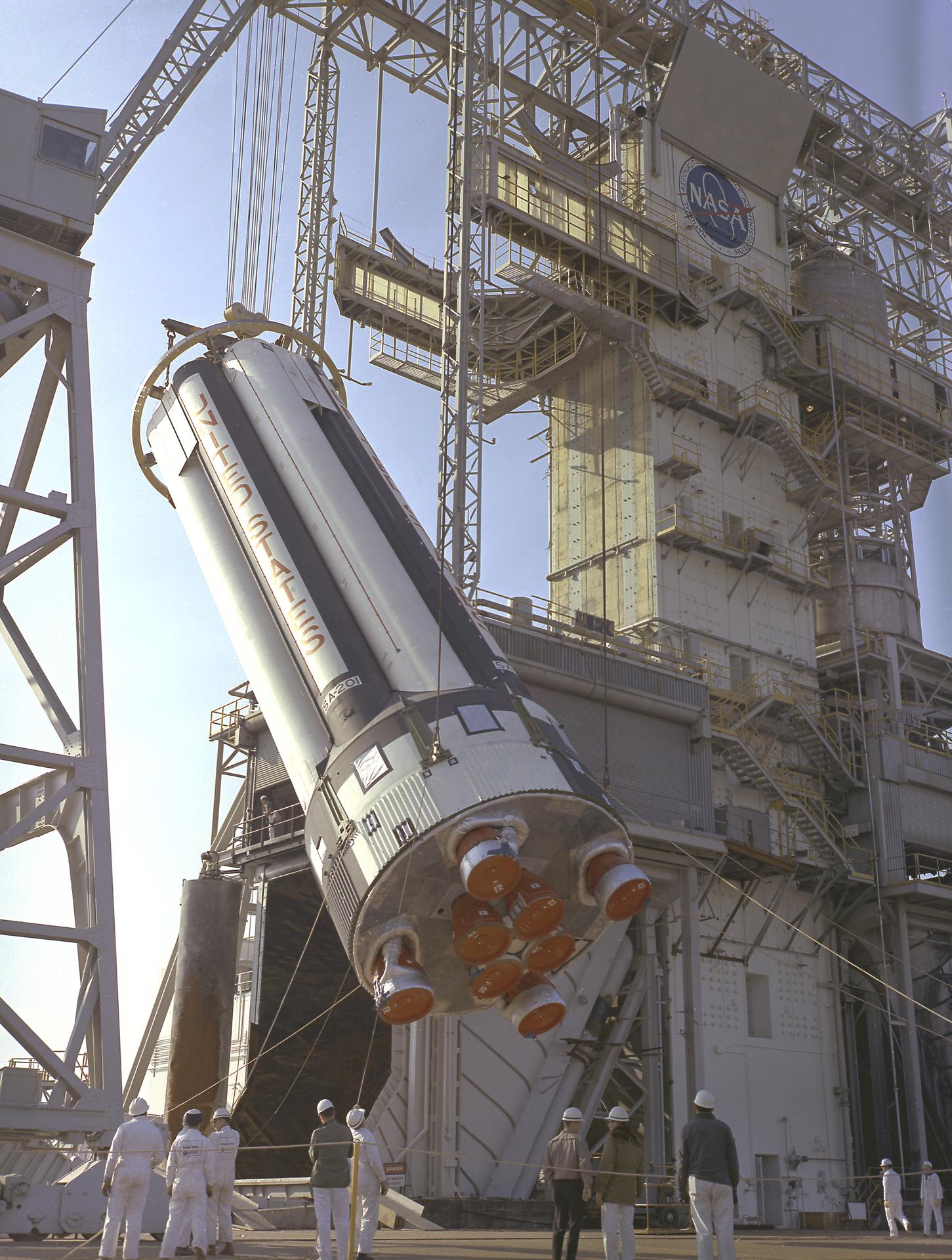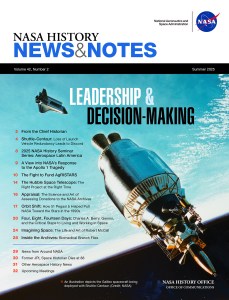The primary goals of Project Gemini included proving the techniques required for the Apollo Program to fulfill President John F. Kennedy’s goal of landing a man on the Moon and returning him safely to Earth before the end of the 1960s. Paramount among those techniques was rendezvous and docking, required to implement the Lunar Orbit Rendezvous method NASA chose for the Moon landing missions. Additional goals of Gemini included proving that astronauts could work outside their spacecraft during spacewalks and ensuring that spacecraft and astronauts could function for at least eight days, considered the minimum time for a roundtrip mission to the Moon. The first six Gemini missions in 1965 and early 1966 demonstrated the spacecraft’s space worthiness, the feasibility of spacewalking, extended flight durations to eight and 14 days, and demonstrated space rendezvous and docking techniques. The goals of Gemini IX included docking with a target vehicle and conducting a lengthy spacewalk during a three-day mission. The actual flight did not go entirely according to the original plan.
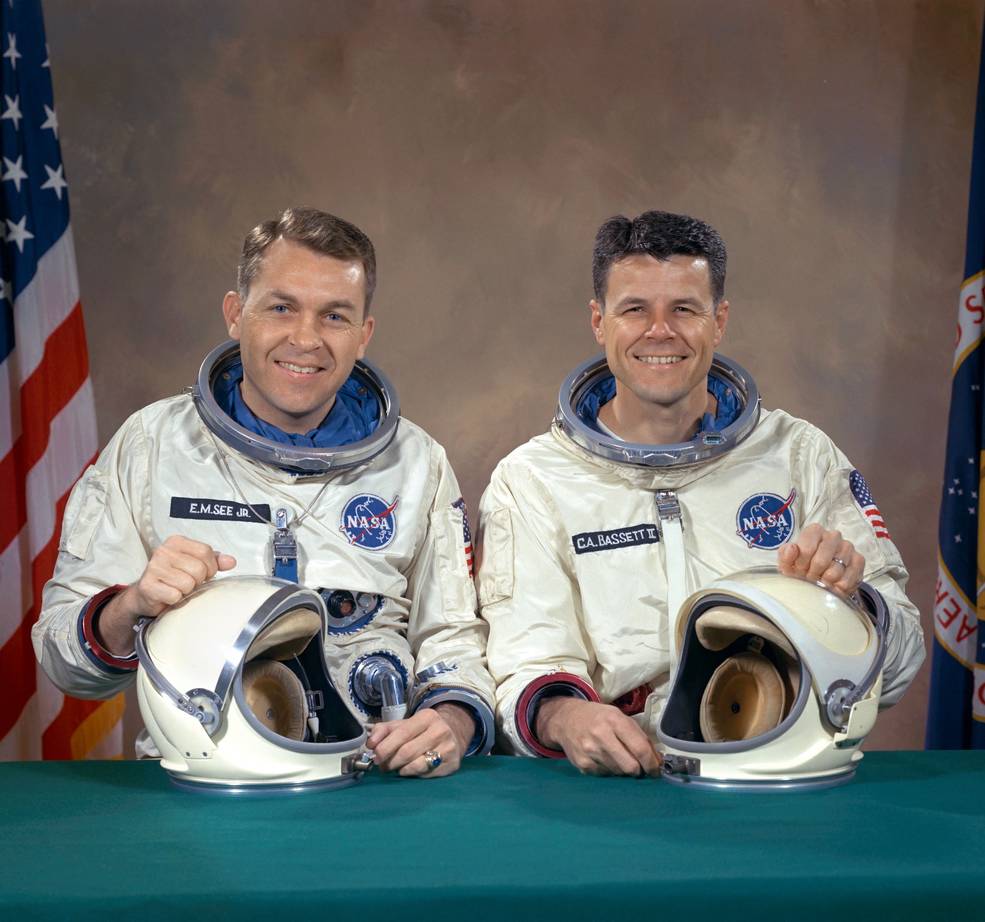
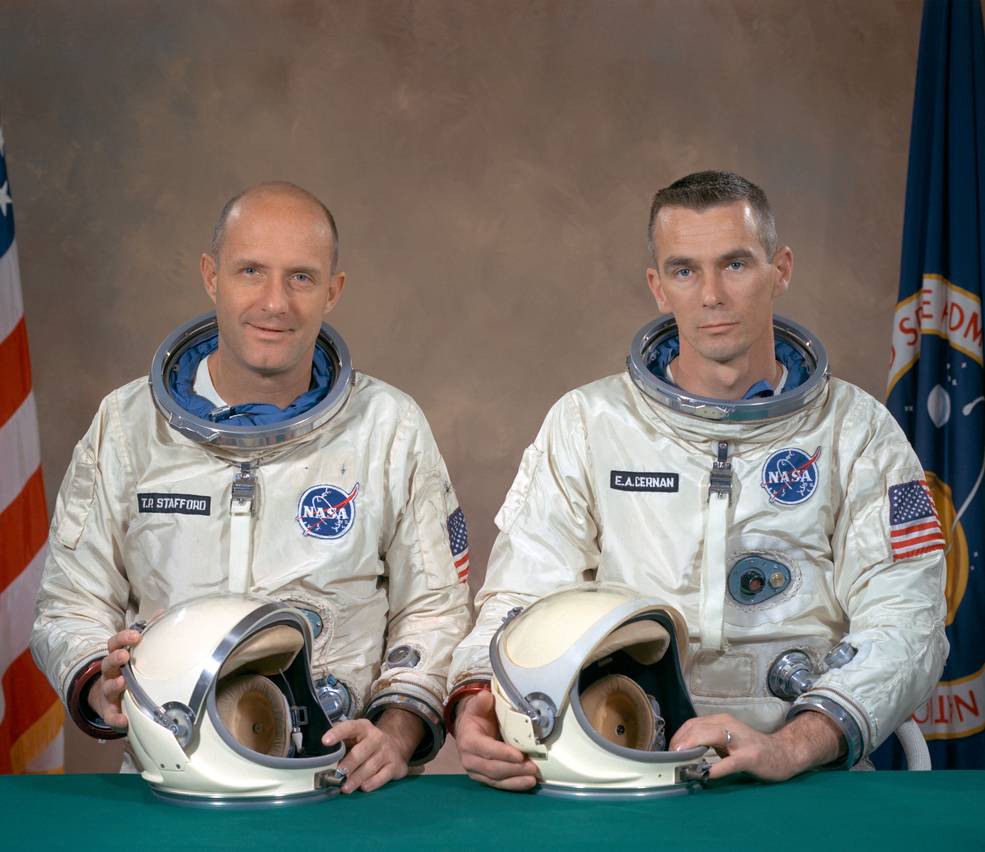
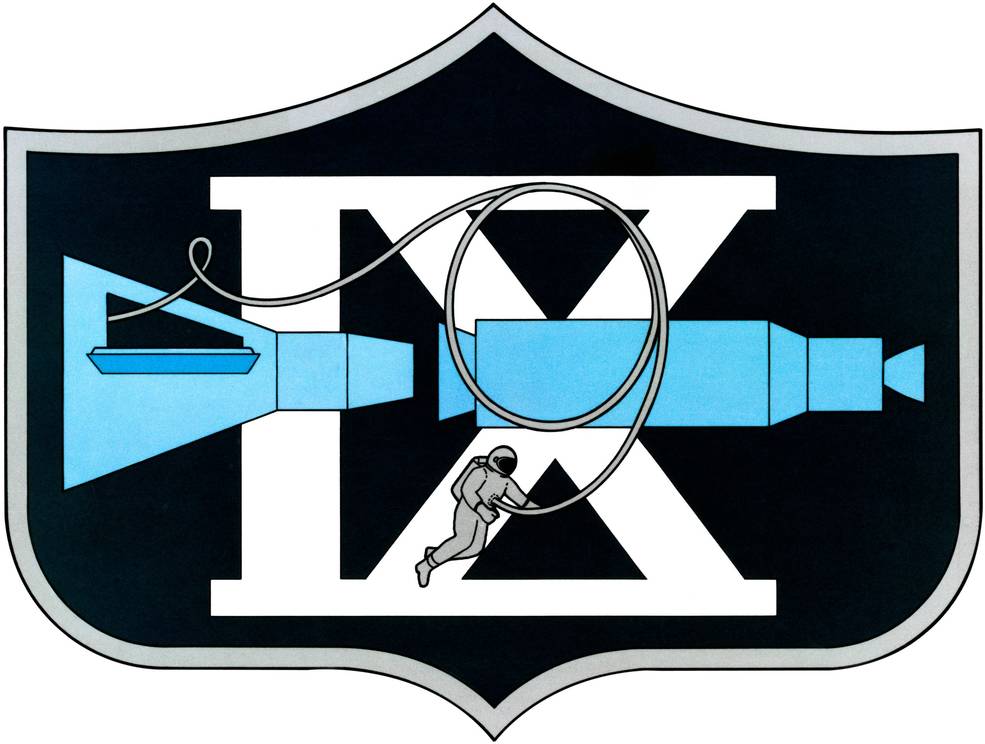
Left: The original Gemini IX crew of Elliott M. See, left, and Charles A. Bassett, who died in an airplane crash. Middle: The Gemini IX crew of Thomas P. Stafford, left, and Eugene A. Cernan. Right: The Gemini IX crew patch.
In November 1965, NASA named spaceflight rookies Elliott M. See and Charles A. Bassett as the prime crew for Gemini IX, with Thomas P. Stafford, already assigned to Gemini VI at the time, and Eugene A. Cernan as their backups. Plans for the mission included a rendezvous and docking with an Agena target vehicle and a 2-hour spacewalk by Bassett including the use of an Astronaut Maneuvering Unit (AMU) backpack to fly free of the Gemini spacecraft, attached only by a 125-foot long tether. Tragically, on Feb. 28, 1966, See and Bassett died in a plane crash as they approached the runway at St. Louis’ Lambert International Airport in marginal weather. Their T-38 Talon aircraft clipped the nearby McDonnell building where technicians were preparing the Gemini IX spacecraft for shipment to the launch site. The deaths of See and Bassett resulted in a shuffling of crew assignments less than three months before the planned launch, with Stafford and Cernan becoming the prime Gemini IX crew and Gemini VII veteran James A. Lovell and rookie Edwin E. “Buzz” Aldrin assigned as their backups.
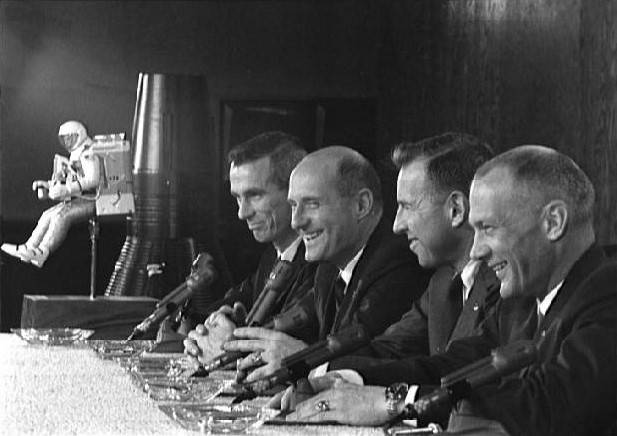
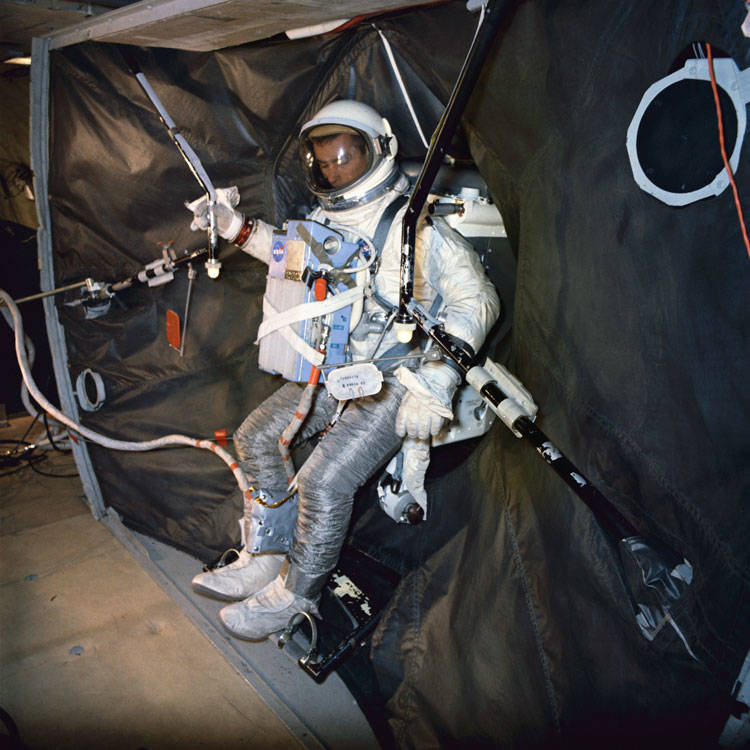
Left: Preflight press conference with the Gemini IX prime crew of Eugene A. Cernan, left, and Thomas P. Stafford, and the backup crew of James A. Lovell, and Edwin E. “Buzz” Aldrin. Right: Cernan practicing donning the Astronaut Maneuvering Unit backpack during his spacewalk training in a zero-g aircraft.
On April 23, Stafford and Cernan, along with their backups Lovell and Aldrin, described their planned three-day mission to reporters during a preflight press conference at the Manned Spacecraft Center (MSC), now NASA’s Johnson Space Center in Houston. The flight plan called for Gemini IX to launch on May 17, 1966, about 90 minutes after the Agena docking target vehicle and confirmation that the target had achieved the correct orbit. Stafford and Cernan would begin the chase to catch up with the Agena and on their third revolution around the Earth, Stafford would guide Gemini IX in for the docking. The next day, Cernan planned to exit the Gemini spacecraft for a two-hour spacewalk – the second American spacewalk in history and far more complex than Edward H. White’s first brief excursion during Gemini IV in June 1965. Wearing a chest-mounted life support system as a backup to his 25-foot umbilical that provided primary life support and communications, Cernan planned to perform a few simple tasks near the open hatch. Next Cernan would translate to the rear of the Gemini spacecraft and don the AMU backpack that included its own life support system and a 125-foot tether. Meanwhile, the mission plan called for Stafford to undock the Gemini from the Agena and fly in formation 120 feet away. While still on the spacecraft’s 25-foot umbilical, Cernan would fly the AMU to a position between the two spacecraft and Stafford would fly the Gemini toward him as if performing a rescue of a stranded astronaut. Cernan would next transfer to the AMU’s life support system and maneuver to the full length of its 125-foot tether, including flying to the Agena and back. At the Gemini hatch, he would discard the AMU and finish the spacewalk. Stafford would then redock with the Agena. On the third day, the astronauts planned to test fire the Agena’s main engine and perform several rendezvous maneuvers. The mission would end with a splashdown in the western Atlantic Ocean, with retrieval by the prime recovery ship the aircraft carrier U.S.S. Wasp (CVS-18). These well-laid plans soon changed.
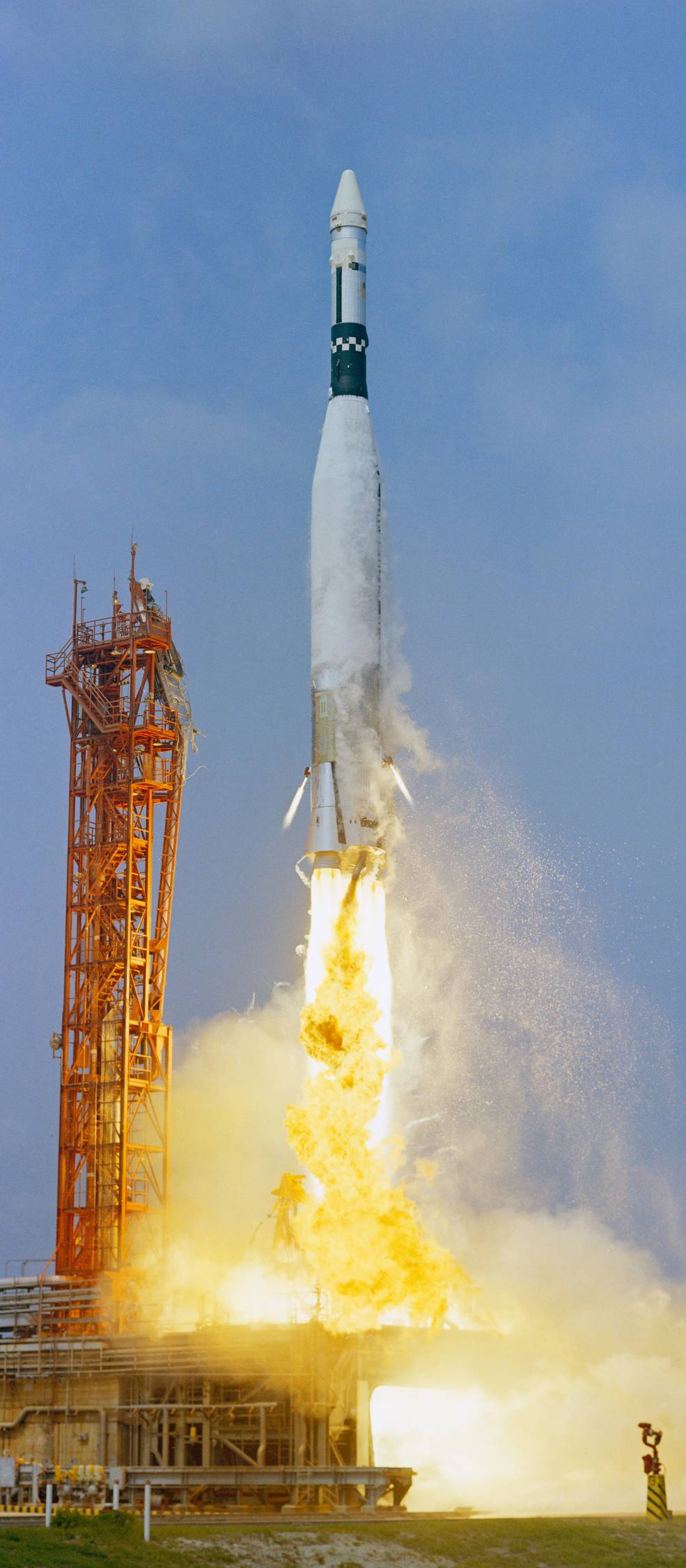
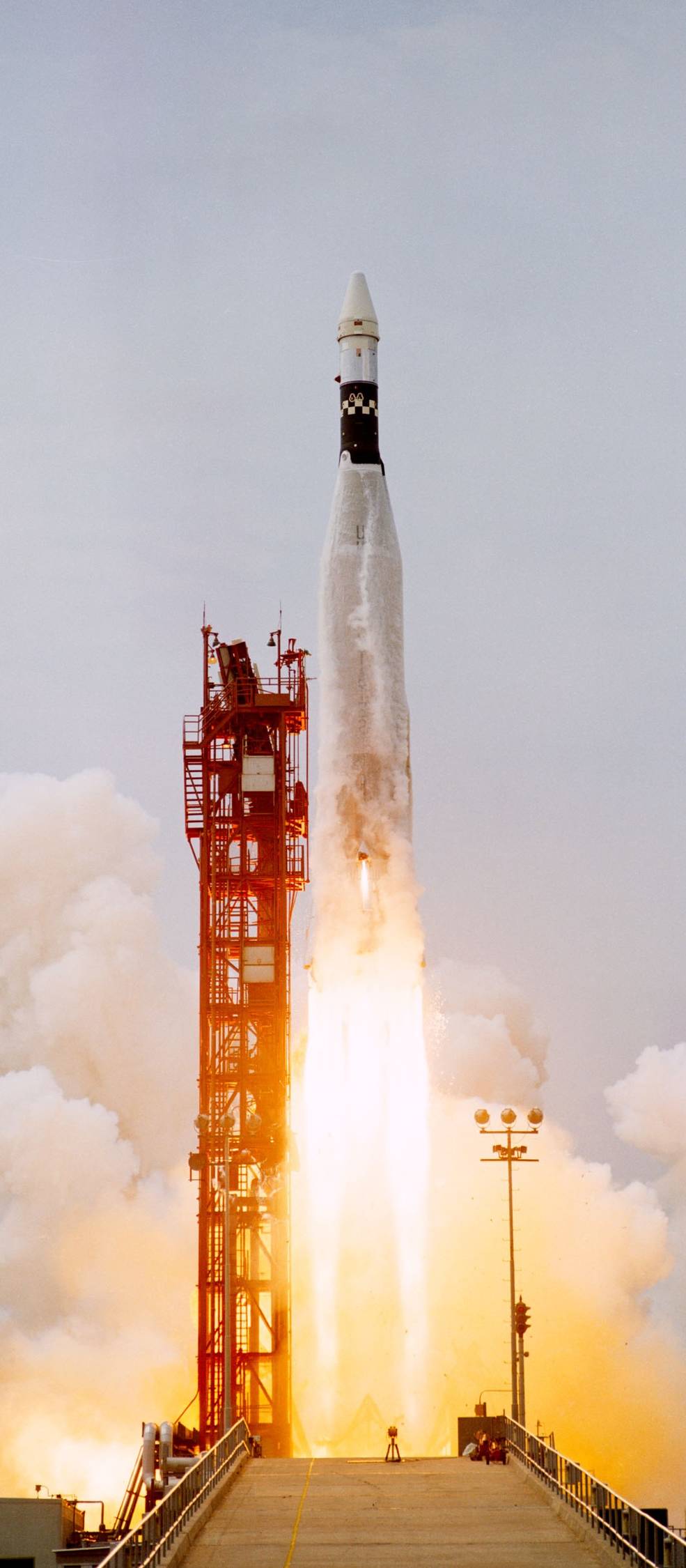
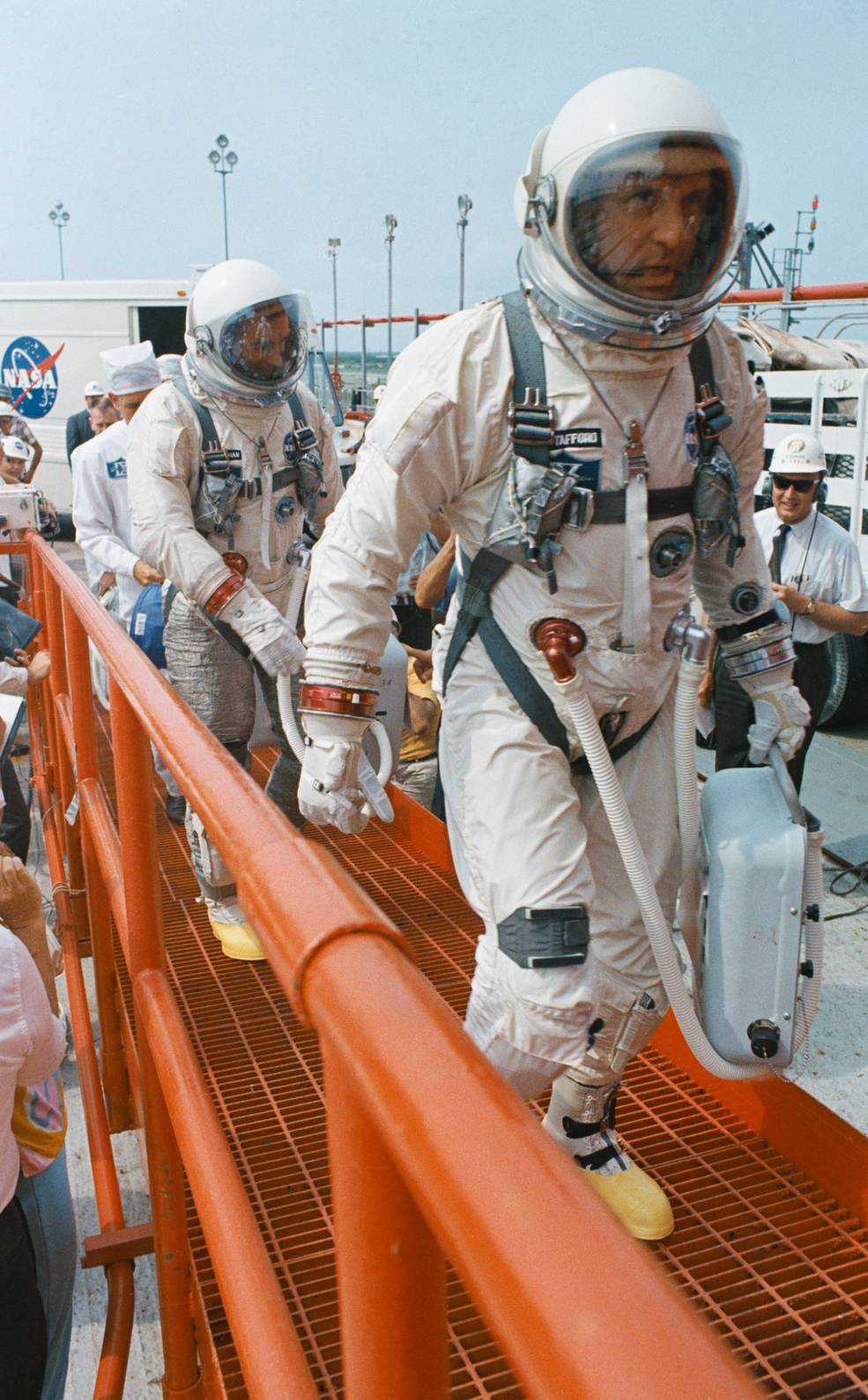
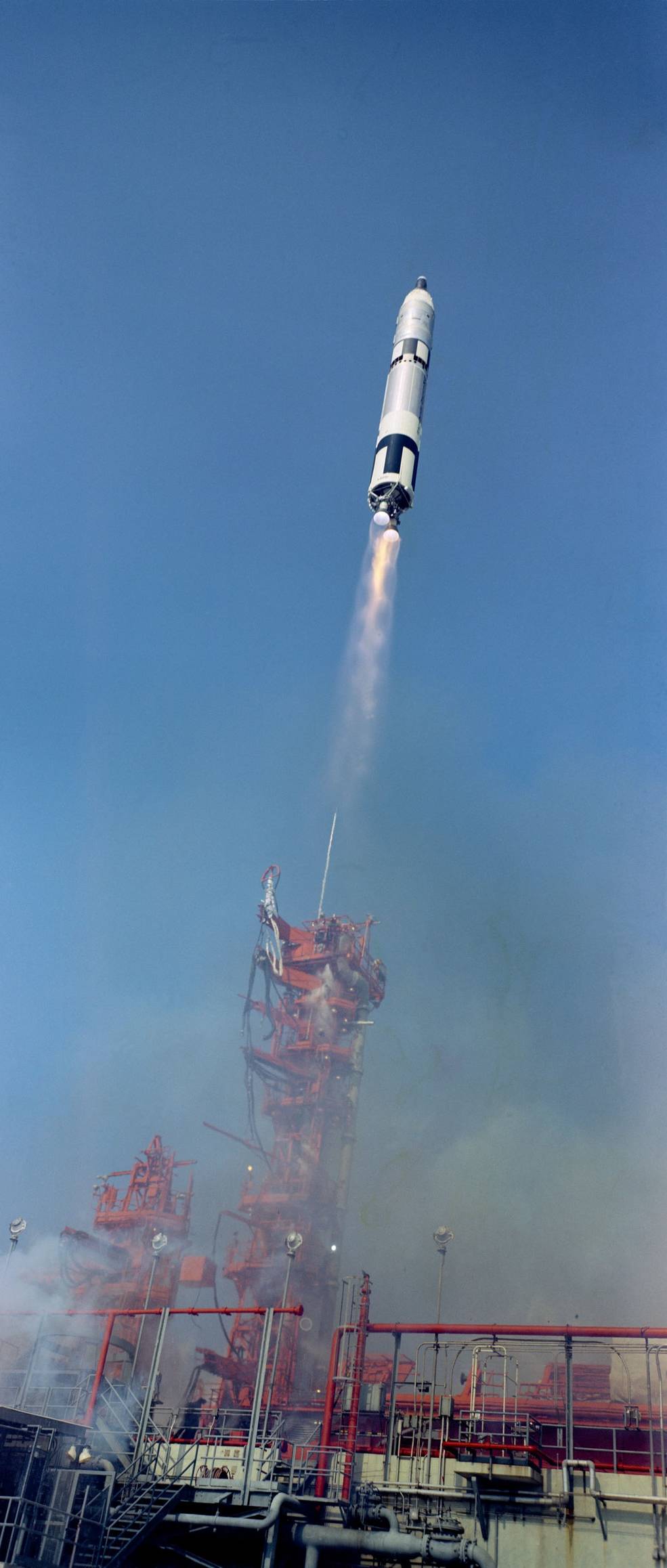
Left: At the Cape Kennedy Air Force Station, now the Cape Canaveral Space Force Station, liftoff of the Gemini IX Agena Target Vehicle. Middle left: The launch of the Gemini IX Augmented Docking Target Adapter. Middle right: NASA astronauts Eugene A. Cernan, left, and Thomas P. Stafford arrive at Launch Pad 19 to board their Gemini IX spacecraft. Right: The launch of Gemini IX from Pad 19.
The flight plan the astronauts outlined in their preflight press conference underwent a dramatic revision when on May 17, with Stafford and Cernan already strapped into their Gemini IX spacecraft, the Agena lifted off from Launch Pad 14 at the Cape Kennedy Air Force Station, now the Cape Canaveral Space Force Station, in Florida. Within two minutes, things began to go wrong as one of the Atlas rocket’s two booster engines started to wobble 10 seconds before their planned shutdown, sending the entire rocket into a tumble from which it could not recover. A team of controllers at the Mission Control Center at MSC, led by Flight Director Eugene F. “Gene” Kranz, monitored the Agena’s launch and subsequent failure. The mission’s other two flight directors, Glynn S. Lunney and Clifford E. Charlesworth, also watched helplessly as events unfolded. The Agena separated as planned but headed in the wrong direction, ending up in the Atlantic Ocean instead of Earth orbit. Disappointed, Stafford and Cernan climbed out of their spacecraft as NASA managers pondered a new plan for Gemini IX.
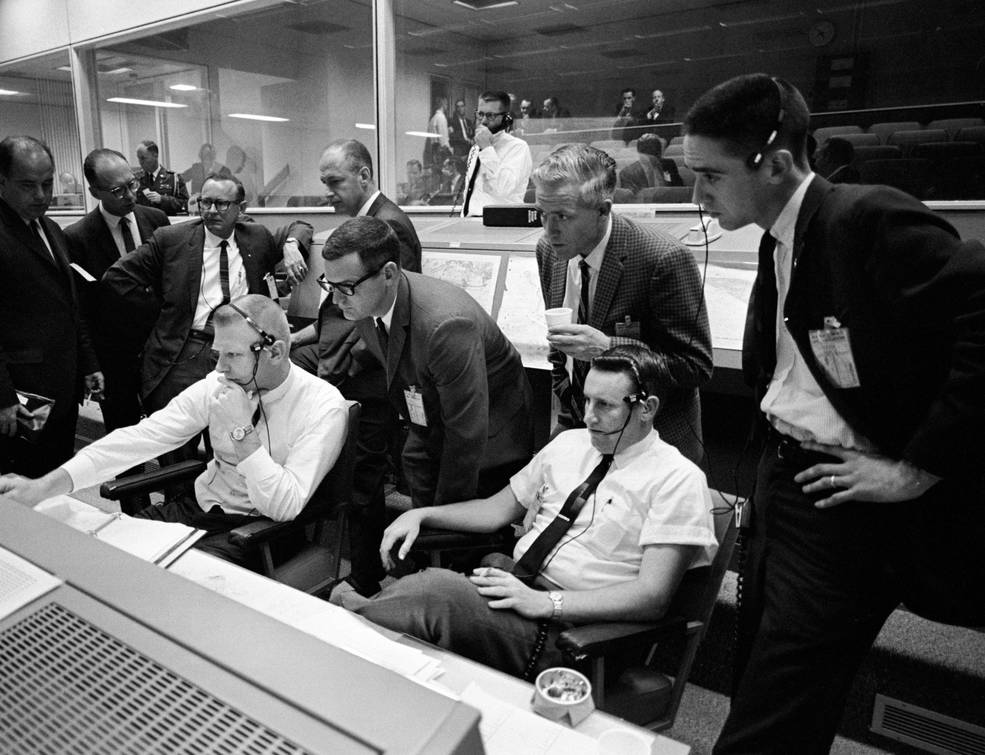
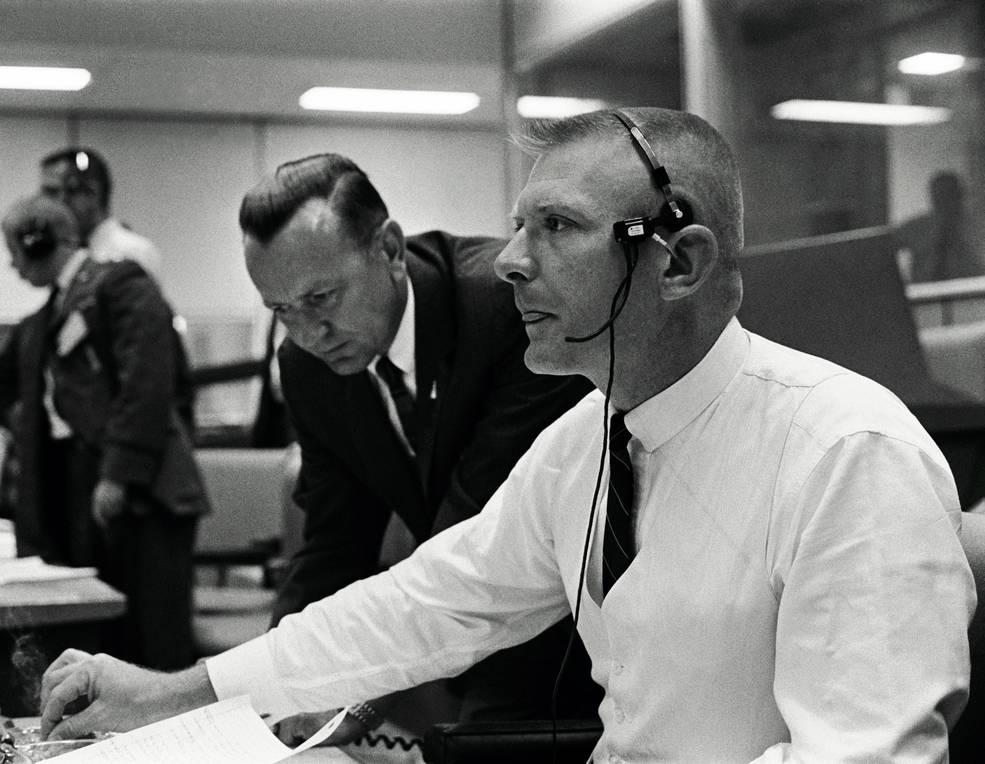
Left: Flight Directors Eugene F. “Gene” Kranz, left, Glynn S. Lunney, and Clifford E. Charlesworth watch helplessly as the Gemini IX Agena target fails to reach orbit on May 17, 1966. Right: Flight Director Kranz during the June 1 launch scrub of Gemini IX.
Since the failure of the Gemini VI Agena target vehicle to reach orbit in October 1965, NASA had developed a contingency vehicle called the Augmented Target Docking Adapter (ATDA). Although it had more limited capabilities than the Agenda target, such as lacking an engine, NASA pressed the ATDA into service for Gemini IX, and it launched on June 1, 1966. It successfully reached orbit although telemetry indicated that its protective shroud failed to deploy as planned. Stafford and Cernan awaited their turn inside Gemini IX, but three minutes before liftoff, ground computers lost contact with the spacecraft, and controllers scrubbed the launch. Two days later, Stafford and Cernan finally lifted off and began to chase the ATDA.
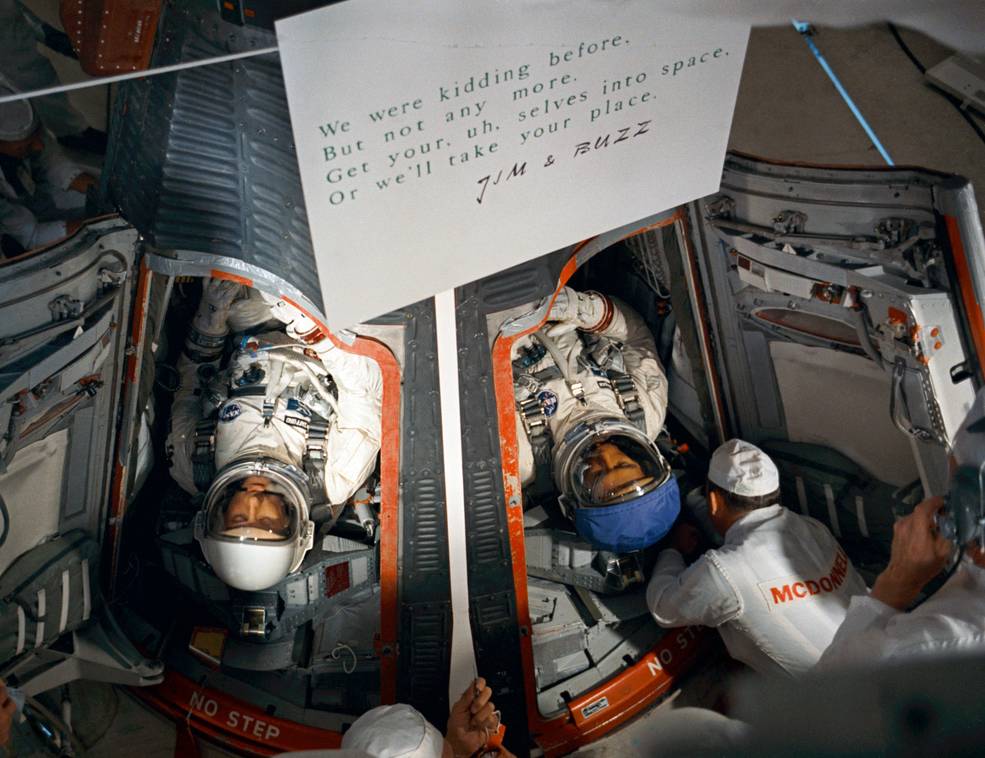
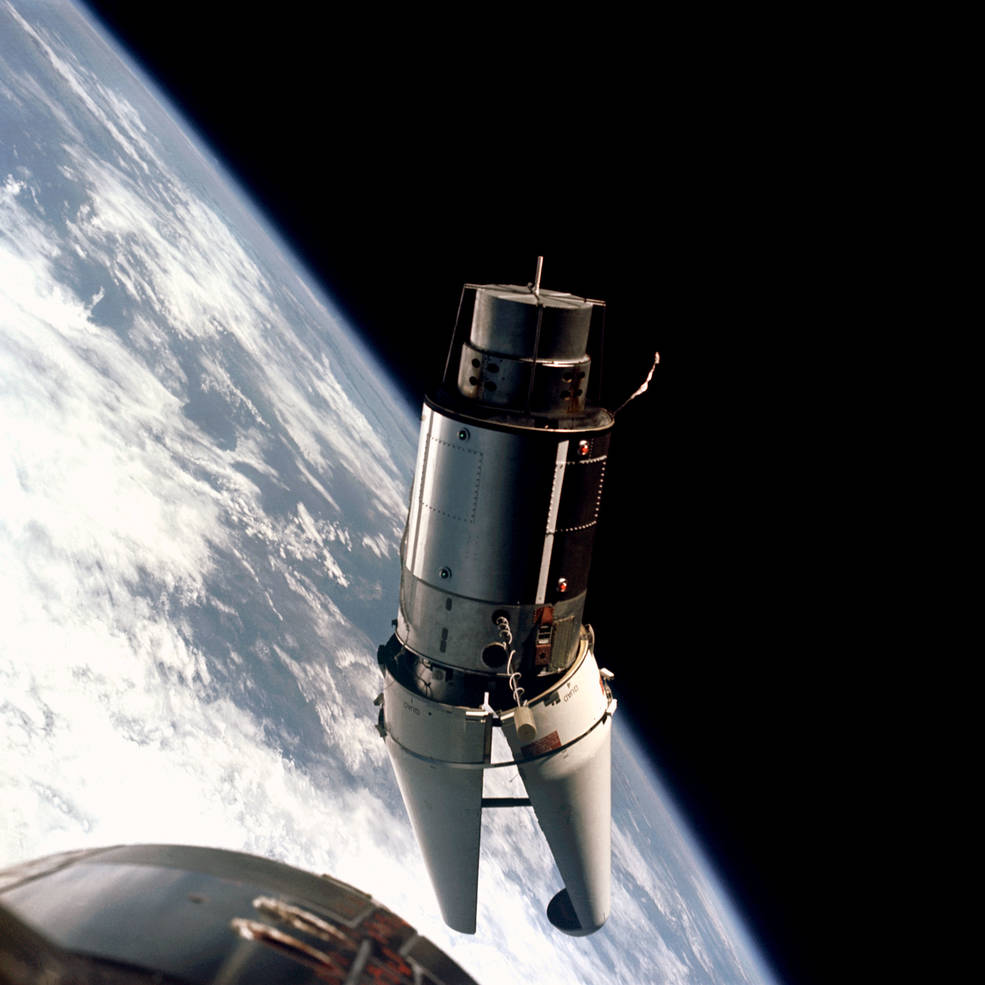
Left: Gemini IX astronauts Thomas P. Stafford, left, and Eugene A. Cernan strapped into their spacecraft for the third and successful launch attempt on June 3, 1966 – their backups, James A. Lovell and Edwin E. “Buzz” Aldrin taped a humorous sign to the spacecraft that read, “We were kidding before, but not anymore. Get your, uh, selves into space, or we’ll take your place.” Right: The Augmented Target Docking Adapter with its partially deployed payload shroud that prompted Stafford to compare it to an angry alligator and that prevented the crew from docking.
When Gemini IX reached orbit, it trailed the ATDA by 640 miles, and after one revolution around the Earth, the distance had closed to 460 miles. On their third orbit, Stafford and Cernan spotted the ATDA as a bright point of light 126 miles away. Stafford maneuvered Gemini IX to close the gap, at one point coming within three feet of the target, slowly tumbling with its payload shroud partially open, preventing a docking. Stafford said it looked like an angry alligator. With no docking possible, Stafford and Cernan executed a backup plan of conducting a second rendezvous, pretending their spacecraft’s radar didn’t work. Although mentally taxing, the crew executed the manual rendezvous before calling it a day. The timeline called for Cernan’s spacewalk the next day, but after completing one more rendezvous with the ATDA using different approach techniques, the exhausted crew decided to put off that strenuous activity until the mission’s third day. They left the ATDA behind as they had no more need for it.
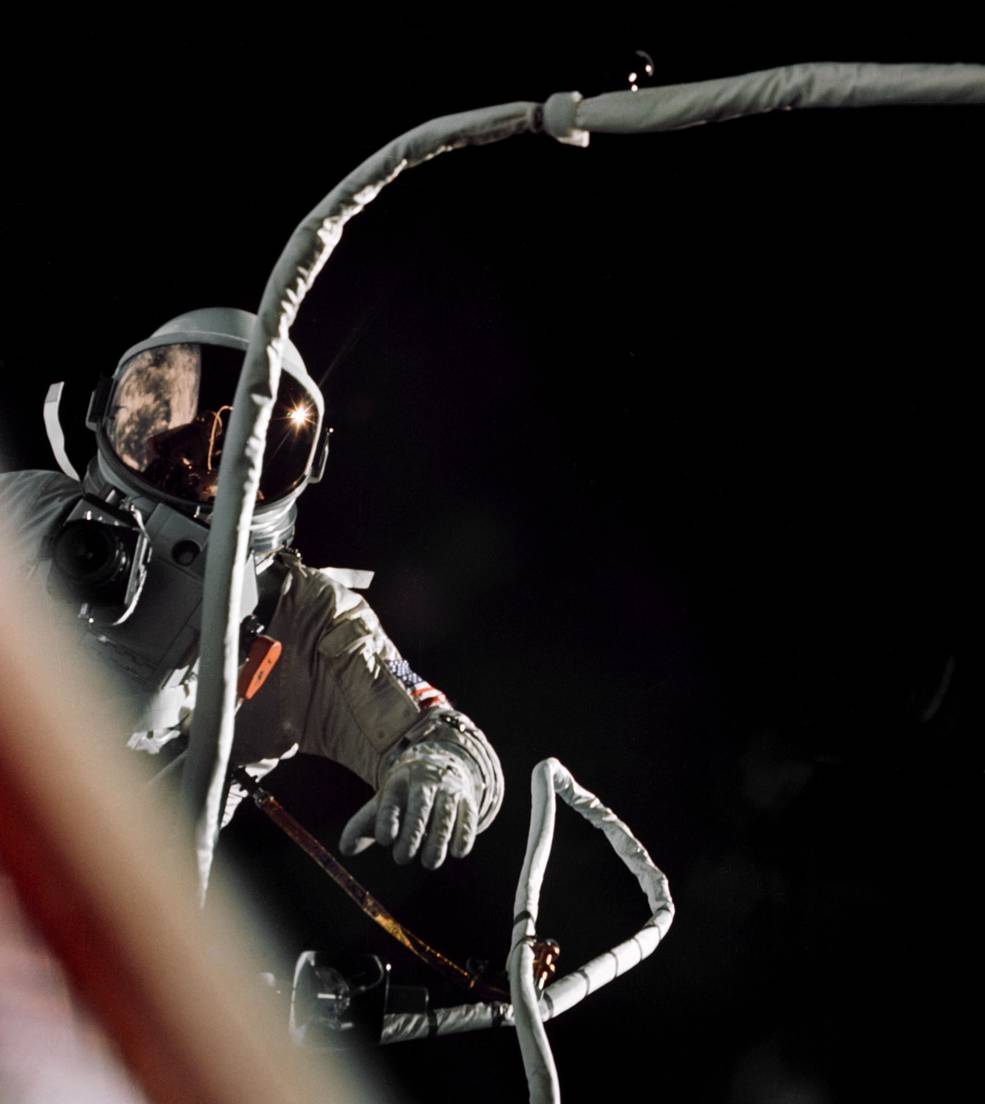
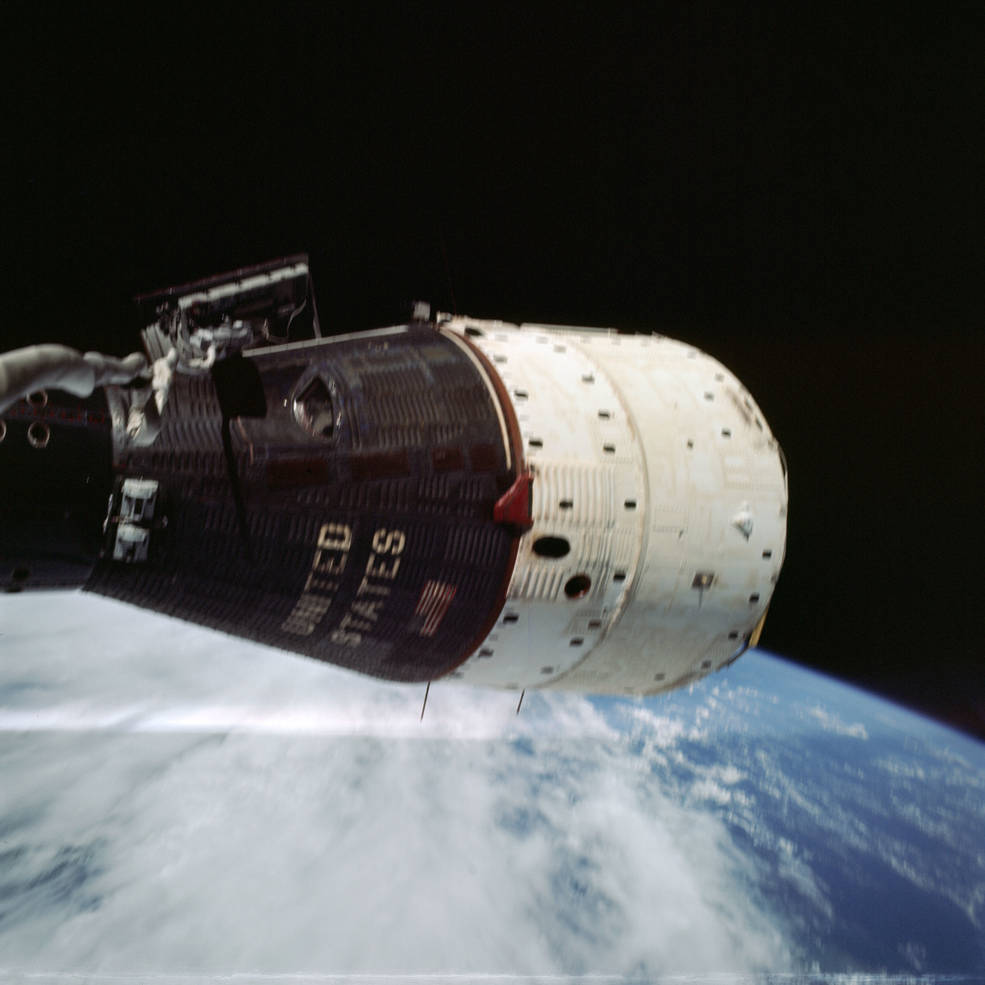
Left: Photograph of Eugene A. Cernan during his spacewalk, taken by fellow Gemini IX astronaut Thomas P. Stafford. Right: View of the Gemini IX spacecraft taken by Cernan during his spacewalk.
Cernan’s spacewalk ran into difficulties from the very beginning. Upon pressurizing his spacesuit, it became so stiff that moving became difficult. Once he exited the spacecraft, Cernan had difficulty maintaining his orientation and his stiff umbilical caused him to move in unwanted directions. Struggling for about 30 minutes on what was by then the longest spacewalk to that time, Cernan made it back to the hatch to rest before translating to the rear of the spacecraft where the AMU awaited him. With insufficient illumination during the orbital night, Cernan struggled to unfold the AMU’s arms and attach himself to it. His spacesuit’s air cooling system couldn’t keep up with his exertions—his heart rate topped 180 beats per minute—and his helmet’s visor fogged up, virtually blinding him. Exchanging the spacecraft’s umbilical for the AMU’s caused him to lose radio contact with Stafford inside Gemini IX. At long last, a disappointed Cernan decided to call the AMU activity off as he considered it no longer safe to do so. He reconnected to the spacecraft umbilical and made his way back to the hatch, more by feel than vision since his helmet remained fogged over. Once back inside the spacecraft, his stiff ballooned spacesuit made it difficult for him to close the hatch. Finally, after two hours, seven minutes, Cernan finished the arduous exercise. The event resulted in many changes to the training for and execution of future spacewalks. The astronauts jettisoned the AMU including its unused fuel.
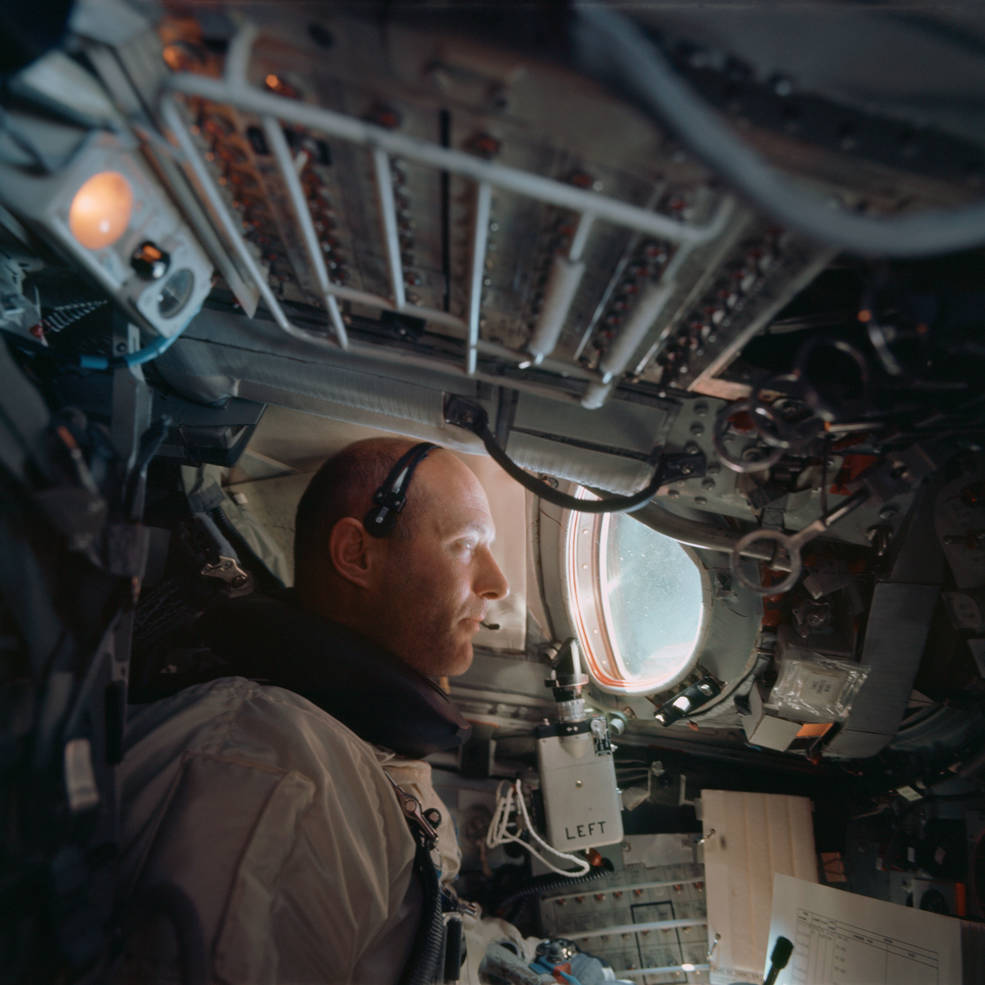
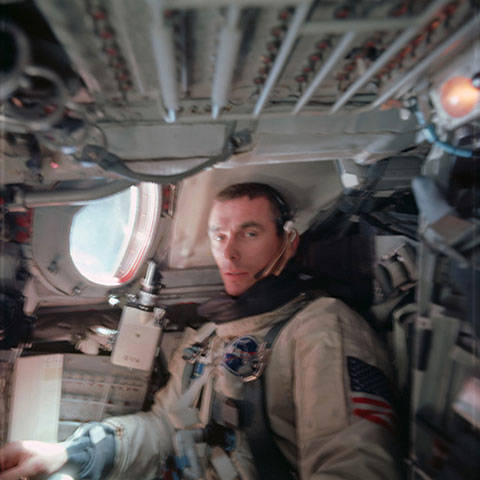
Thomas P. Stafford, left, and Eugene A. Cernan photographed each other during the Gemini IX mission showing the tight confines of the spacecraft.
After a much-needed rest, Stafford and Cernan prepared to return to Earth. In darkness over the Pacific Ocean east of Hawaii, the astronauts fired Gemini IX’s retrorockets to drop them out of Earth orbit. As the spacecraft encountered the upper layers of the atmosphere, the plasma created formed a sheath around the capsule that temporarily cut off communications with the ground. A small drogue parachute opened at 26,000 feet to slow and stabilize the spacecraft, followed by the larger main chute at 16,000 feet. Gemini IX splashed down within three miles of the aircraft carrier U.S.S. Wasp and only 3,000 yards from the aim point, the most precise landing in the U.S. space program up to that time. Sailors hoisted the spacecraft with the crew still inside aboard the carrier 51 minutes later.
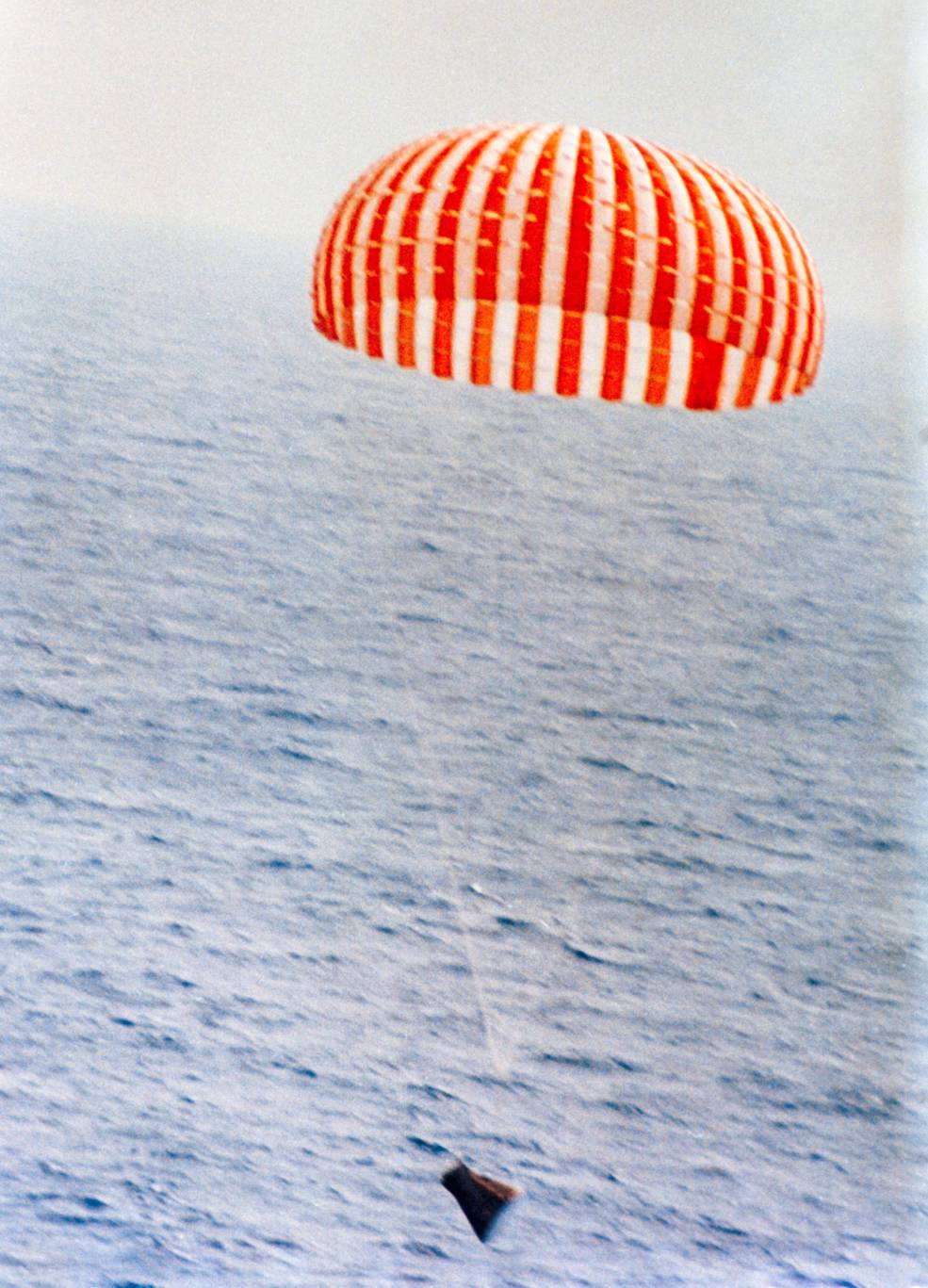
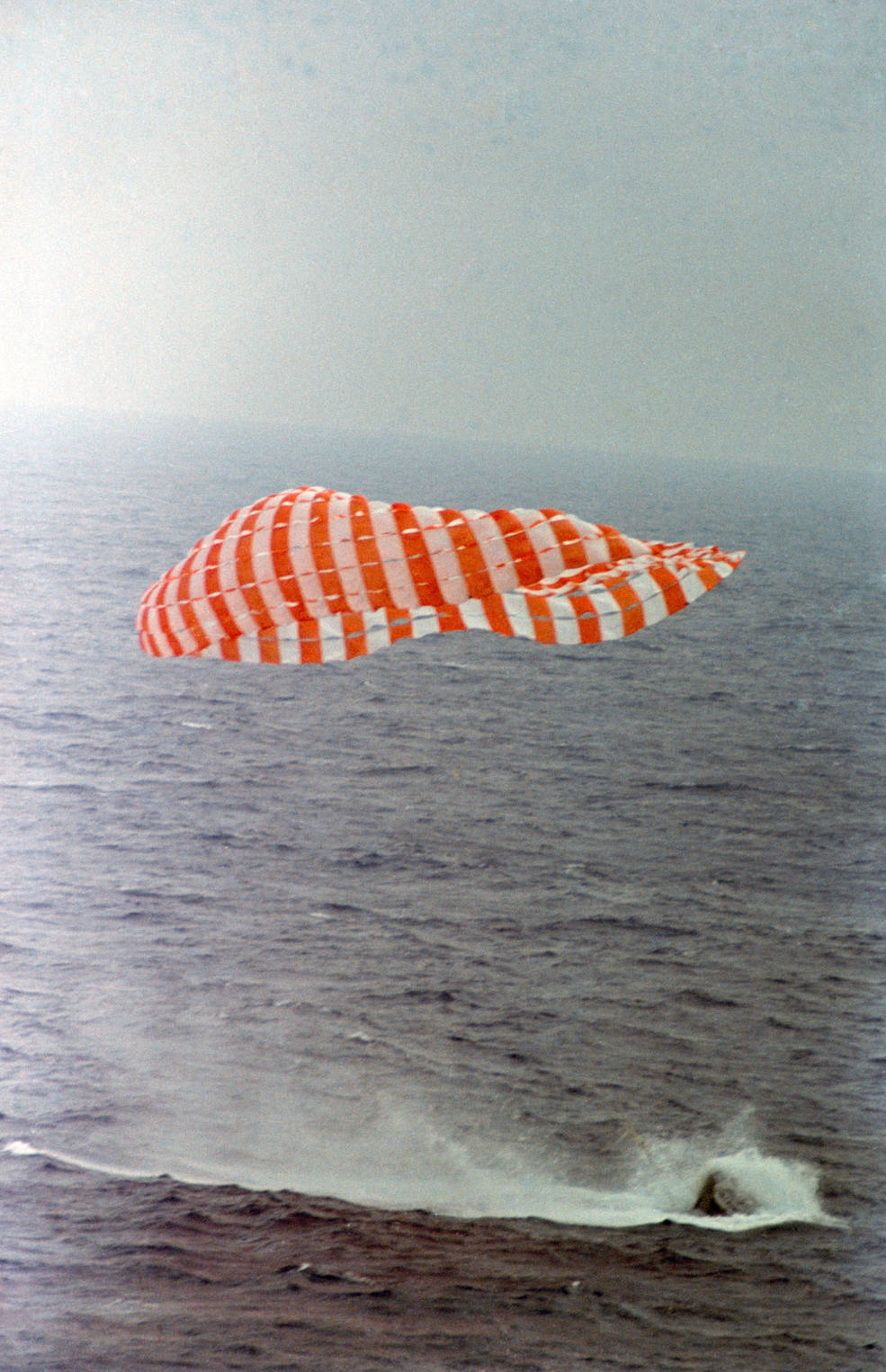
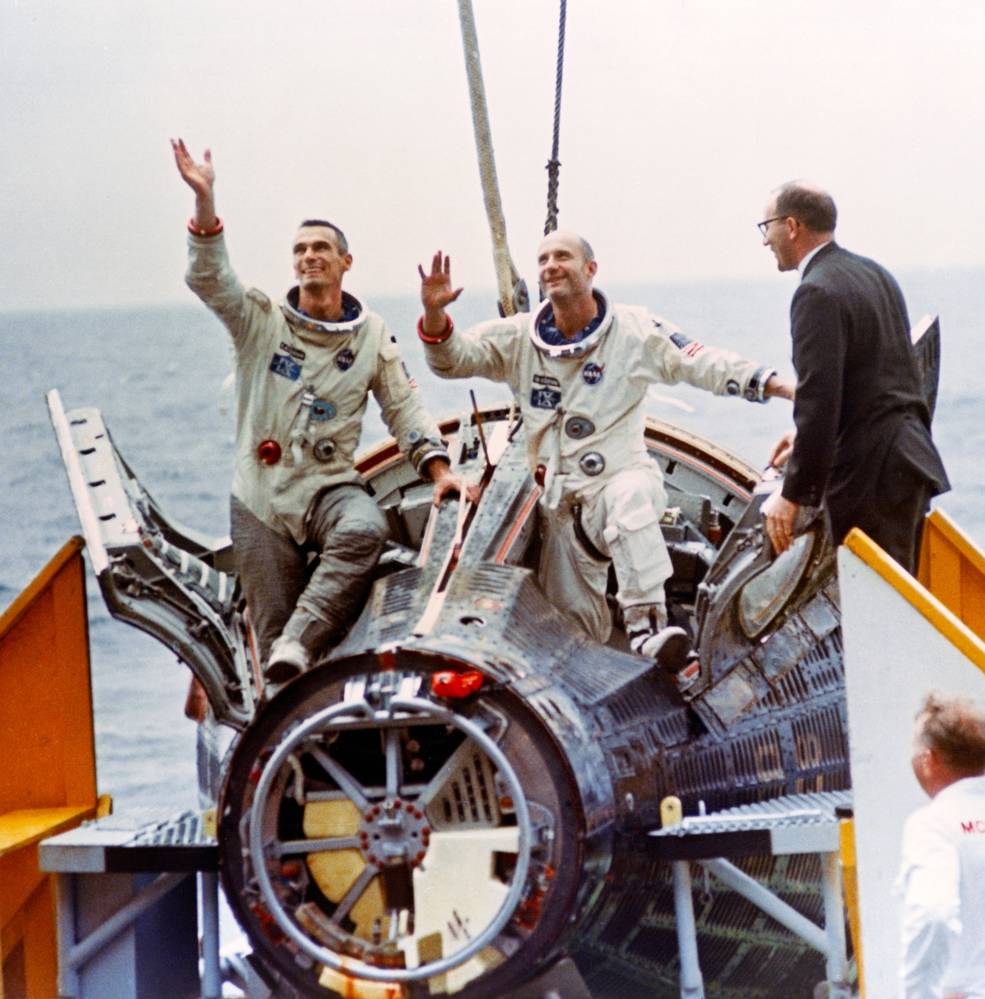
Left: The Gemini IX spacecraft descending to the Atlantic Ocean on its main parachute. Middle: Gemini IX at the moment of splashdown. Right: Gemini IX astronauts Eugene A. Cernan, left, and Thomas P. Stafford on the deck of the prime recovery ship the U.S.S. Wasp.
Once aboard the carrier, Stafford and Cernan removed their spacesuits and received medical examinations. Doctors discovered that Cernan had lost more than 13 pounds during the three-day spaceflight, much of it due to dehydration brought on by his exertions during the spacewalk. After talking by telephone with President Lyndon B. Johnson and with their wives, they flew to NASA’s Kennedy Space Center (KSC) in Florida for four days of intense debriefings before returning to Houston’s Ellington Air Force Base to reunite with their families and return to work where additional debriefings awaited them. Director of the MSC Robert R. Gilruth summarized the mixed results of the Gemini IX mission during a postlanding press conference. “It’s my observation that even though we get more proficient, the flights don’t get any easier,” he said. “The reason they don’t get any easier is because each time we try to do more.”

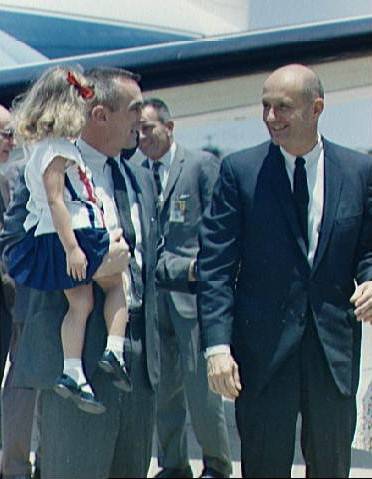
Left: Aboard the prime recovery ship the U.S.S. Wasp, Gemini IX astronauts Thomas P. Stafford, left, and Eugene A. Cernan talk by telephone with President Lyndon B. Johnson. Right: Cernan, left, holding his daughter Tracy, and Stafford upon their arrival at Ellington Air Force Base in Houston.
On June 17, Stafford and Cernan summarized their mission to assembled reporters, including narrating a film from their flight, during a press conference in MSC’s main auditorium. They answered the reporters’ questions especially about some of the difficulties they encountered. Robert C. Seamans, NASA deputy administrator, presented Stafford and Cernan with NASA Exceptional Service Medals in recognition of their groundbreaking mission to help America achieve President Kennedy’s goal of a Moon landing. The Gemini IX spacecraft is on display at KSC’s Visitor Complex.
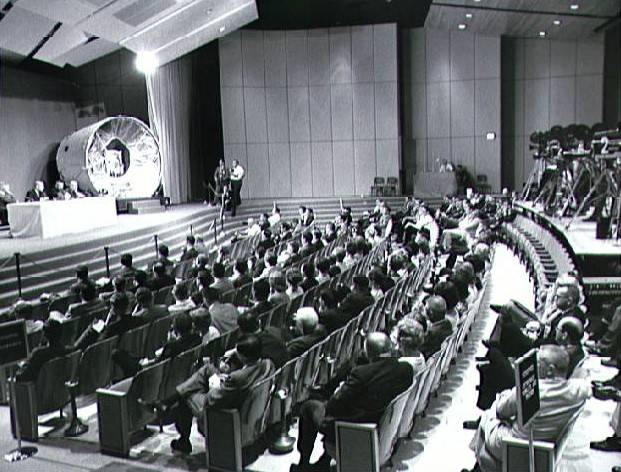
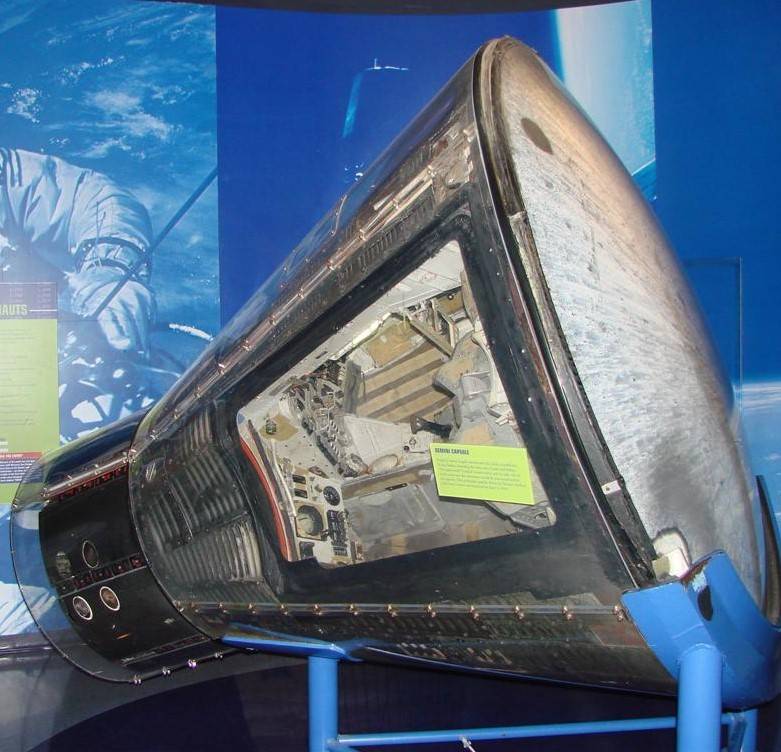
Left: Gemini IX astronauts Thomas P. Stafford and Eugene A. Cernan on the stage of the auditorium of the Manned Spacecraft Center, now NASA’s Johnson Space Center in Houston, for the postflight press conference, with a model of the rear portion of the Gemini spacecraft including the Astronaut Maneuvering Unit on the stage with them. Right: The Gemini IX capsule on display at KSC’s Visitor Complex.




























